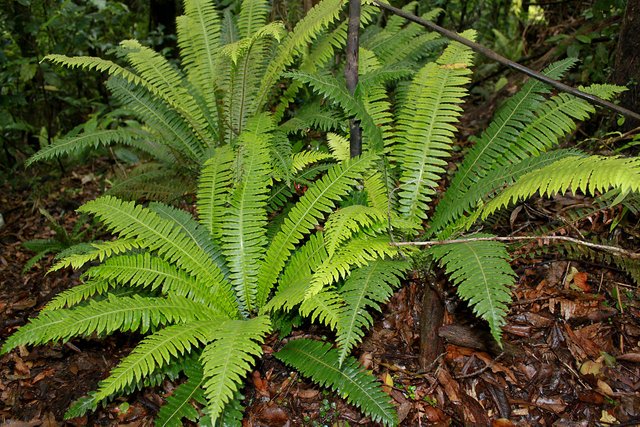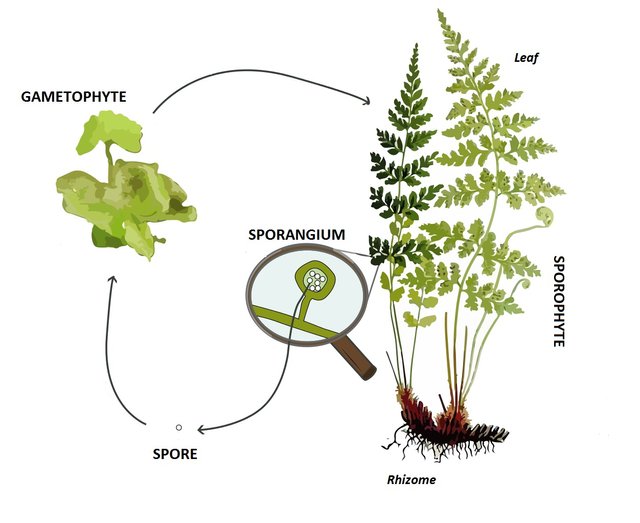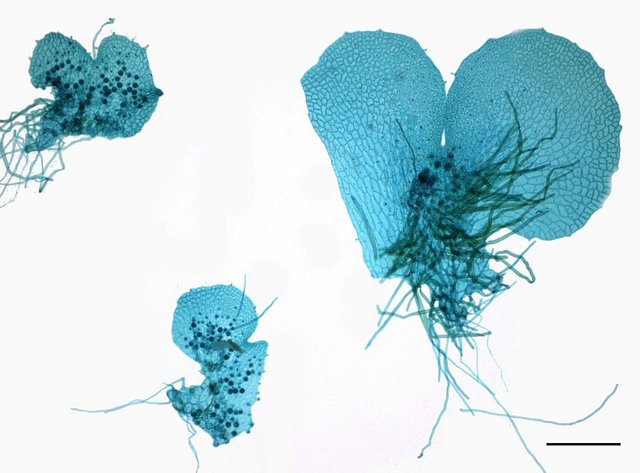Introduction
Ferns are probably the most prominent seedless vascular plants. Their life cycle differs from flowering plants, since they have two separate stages in their life cycle which can both grow independently. Most of us have probably seen ferns, perhaps in the forest, that look something like this:

This picture and our casual observation only reveals half of the fern's life cycle. The reason we can't easily see the other half is because the fern isn't large during its other stage. In this post we'll look into the fern life cycle and how they split their life between two stages in a process called the alternation of generations.
Alternation of Generations
All plants share a common life cycle plan consisting of two stages. During one stage the plant has one copy of its genome (haploid) and during the other stage the plant has two copies of its genome (diploid). Plants alternate between the two generations which gives it the name of alternation of generations [Chang]. Here's a diagram showing this cycle for ferns:

The stage of the fern we see is the sporophyte which has two copies of its genome [Kenrick]. Structures on the sporophyte, called sporangium, form and produce spores through meiosis [Taiz]. The spores can be dispersed in a similar way to seeds in the case of flowering plants.
Once the spores have landed in their future home, they germinate and grow into a structure called the gametophyte [Chang]. The gametophyte has a single copy of the genome, since they were formed through meiosis from the cells of the sporophyte. The great differences in appearance between the two stages is possible through changes in gene expression [Shaw]. If you are wondering what the haploid gametophyte of a fern looks like, here is an image of one using a microscope:

This gametophyte stage is when the fern actually produces reproductive structures. So, this is the stage of the life cycle when sperm and eggs are produced. Once an egg is fertilized, the embryo will then grow into the sporophyte thereby restarting the cycle [Taiz].
Conclusion
Like all plants, ferns alternate between two different stages which have either one(haploid) or two(diploid) copies of the genome. In the case of ferns, the diploid stage is easily visible. The haploid stage is easily missed, because it's small and might not even be visible with the naked eye. Despite its small size, this is still a vital stage of the fern life cycle when sperm and eggs are produced.
Thank you very much your valuable time spent reading, and I hope everyone has a good evening.
If you're interesting in science, technology, engineering, and mathematics consider supporting #steemSTEM.
Sources
Images
Fern picture: https://commons.wikimedia.org/wiki/File:Blechnum_discolor_-_crown_fern.jpg
Fern life cycle: https://commons.wikimedia.org/wiki/File:Pteridophyte_lifecycle.jpg
Fern gametophyte: https://commons.wikimedia.org/wiki/File:Pter1025_Fern_gametophytes.jpg
References
[3] Taiz, Lincoln, et al. Plant Physiology and Development. Sinauer Associates, Inc., Publishers, 2015.
Congratulations @servusminervae! You have completed some achievement on Steemit and have been rewarded with new badge(s) :
Click on any badge to view your own Board of Honor on SteemitBoard.
For more information about SteemitBoard, click here
If you no longer want to receive notifications, reply to this comment with the word
STOPDownvoting a post can decrease pending rewards and make it less visible. Common reasons:
Submit